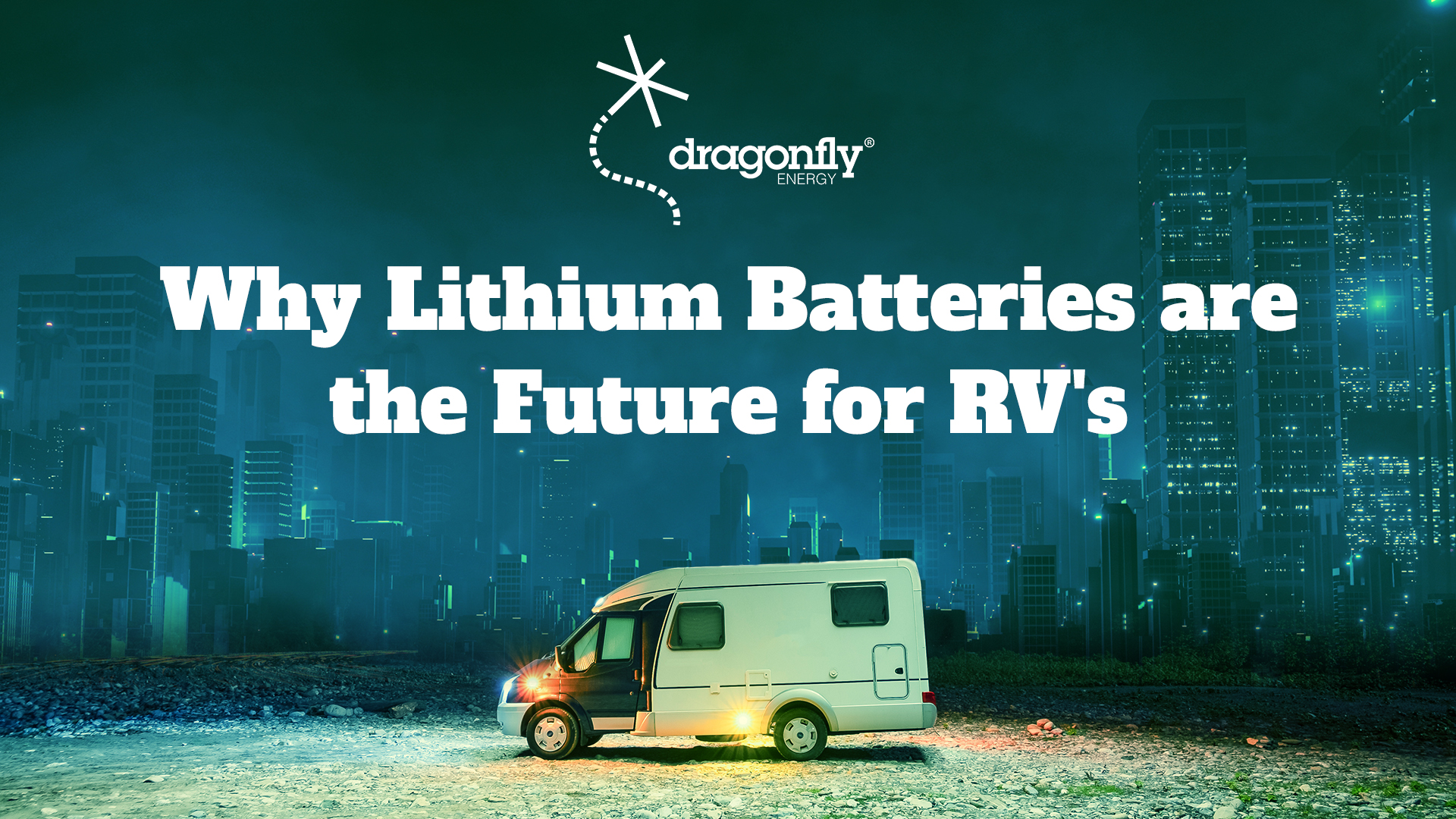We’ve all known about lithium-ion batteries for the past two or three decades, particularly as cell phones and laptops have become the norm. Because of their energy density, these batteries have changed the mobile world.
It’s taken a while for the transportation industry to catch up on the battery front, but with lithium-ion batteries gaining steam with RV users, in particular, they are most certainly the wave of the future.
Compared to what they have known, most RV travelers are amazed by what lithium-ion batteries have to offer. This technology is forever changing the way people RV.

What Are Lithium-Ion Batteries?
Lithium-ion batteries are rechargeable batteries based on a relatively new technology compared to standard lead-acid batteries. These batteries use a chemical reaction where a lithium compound can gain and lose lithium molecules.
When this reaction occurs, the lithium loses its ionic charge and an electron gets released. This reaction is reversible by charging the battery.

Lithium-ion batteries have been used in electronic applications, like your cell phone or laptop computer, for years. But the technology has advanced tremendously over the past decade, making lithium-ion an excellent choice for RVs, as well.
In terms of RV usage, the more specific technology making waves is lithium iron phosphate (or LiFePO4) batteries. LiFePO4 batteries are extremely safe and offer a ton of benefits when upgrading a battery bank.

Lithium-Ion Batteries vs Lead-Acid
Some key functional differences give lithium-ion batteries a leg up over lead-acid.
Lithium-ion batteries are more than twice as energy-dense, meaning they weigh much less for the same amount of energy. They also take up less space and are non-toxic. This means they can be installed anywhere in an RV.
Li-Ion batteries also charge quicker than lead-acid batteries. They typically charge about four times quicker. Lithium-ion technology also performs much better under heavy load applications where it does not suffer from a phenomenon called the Pukert effect. This causes lead-acid batteries to lose energy delivered under heavy loads.
Weather will challenge any battery’s performance, but lithium-ion wins again, performing better overall in hotter and colder temperatures.

Lead-acid batteries come with a cheaper up-front price tag, but as you will see, the cost-effectiveness of that lower price doesn’t hold up.
Why Lithium-Ion Batteries Are The Future
More Energy Efficient
Lithium-ion batteries are more energy-efficient, meaning that an RVer can use more of the battery’s energy. Because they have such low internal resistance, charging is highly efficient, and they can take charge quickly. The energy in equals energy out with lithium-ion batteries.
Longer Life Span
Any battery degrades as it gets used over time. Lead-acid batteries, however, degrade much more quickly than lithium-ion batteries.

RVs of the past have had to replace batteries every few years or sooner due to poor maintenance or use. With lithium-ion batteries, thinking of a battery as a lifetime asset of the RV is not unreasonable.
A lithium-ion battery can last 10-40 times longer than a lead-acid battery. Many will see 5000 usable deep complete discharges and thousands of cycles more with lighter use. In an RV, this would equate to 20 years or more of service.
Enhanced Safety
The technology behind batteries has improved to the point that lithium batteries are a very safe option for your RV. Batteries based on the LiFePO4 technology are inherently safe and have additional protections within the BMS, or battery management system.
If a lead-acid battery shorts out, it can cause an explosion, burns, and fire. However, the BMS of our lithium-ion batteries will shut down and prevent this.
There is no maintenance on these batteries, and they will not produce any gasses or spill any liquids. The materials that LiFePo4 batteries are made from are also non-toxic. Overall, an RV with an adequately designed Li-Ion battery will be much less prone to the dangers lead-acid batteries pose.
More Cost-Efficient
As we mentioned, lead-acid batteries come with a much lower up-front cost, but a lithium-ion battery is much more cost-efficient over the life of the batteries.
The lithium-ion batteries’ capacity is much denser than their lead-acid counterparts, meaning they can store more energy in the same physical space. If you max out space set aside for your battery bank, you can get much more energy storage in that space when using lithium.
The depth of discharge of a lithium-ion battery can safely reach 85% or more. Lead-acid batteries have a shorter lifespan if discharged below 50%. Not only can you get more energy storage into a given space with lithium, but more of that stored energy is available for actual use.

We said that lithium batteries have a longer lifespan, which also helps level the playing field when it comes to price. A quality lithium-ion battery can last a minimum of 10 times longer than a lead-acid. Thus, the lifecycle cost of lithium batteries is much lower than alternative batteries of the past.
Maintenance-Free
A considerable benefit of lithium-ion batteries is that they are maintenance-free. Most lithium batteries in an RV application come with a battery management system (BMS). There is no hands-on maintenance. The BMS protects you and the battery from unsafe operating conditions and keeps the battery in balance.
A Brighter Future for RVs Includes Lithium
When weighing the benefits and advantages versus the cost, it’s easy to see how lithium iron phosphate batteries are the future of the RV industry. From user experience and less shop time to an environmentally better solution, lithium-ion batteries are the right choice for the next generation of RVs.

